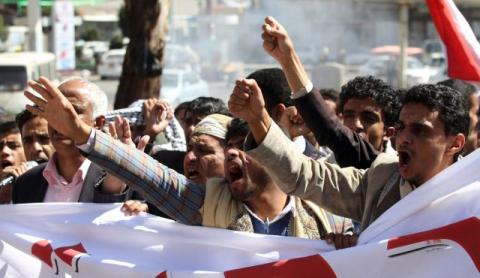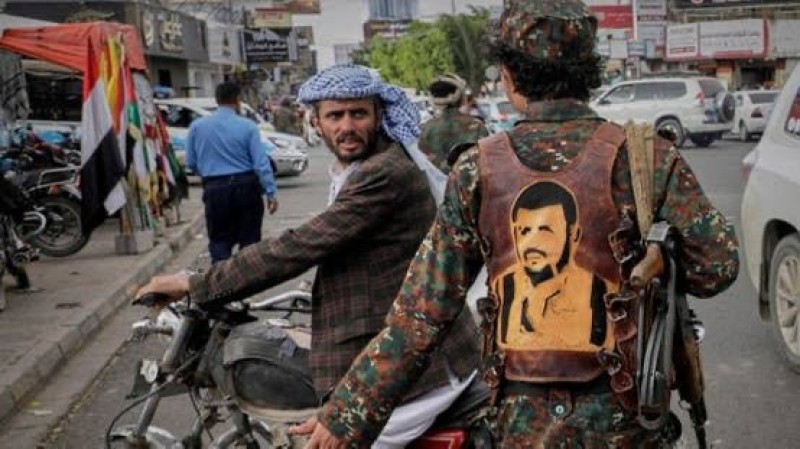Yemen's descent into chaos affects all of us


When the Arab Spring protests swept the Middle East in 2011, Yemen was among the first countries to see a popular uprising against a long-entrenched dictator. The revolution was plagued by violence from the outset, which was unsurprising given that Yemen is home to a complex web of regional and sectarian divisions. So when President Ali Abdullah Saleh agreed eventually to a handover of power, where he would step down in return for immunity from prosecution, it appeared to be a triumph for process over violence. While the agreement was not popular with all the protesters, it moved the revolution from the streets into the negotiating room, as different parties sat down to hammer out a new constitution. It was the only Arab Spring country that saw a negotiated transfer of power, and there were high hopes for the progress it might make.
Now, nearly four years after that initial revolution, Yemen remains mired in chaos, plagued by an Al-Qaeda insurgency, a secessionist movement in the south of the country and an uprising by Shia Houthi rebels. On 25th December, the country's second highest-ranking intelligence official was abducted by suspected Houthi fighters. Terrorist attacks are increasing in frequency; earlier in the month, an attack by Al-Qaeda killed dozens, including 15 school children.
The transitional government that was put in place in the 2011 agreement has been rendered all but powerless, after rebels took control of the capital, Sanaa, in September this year. The Houthis are currently the most pressing problem for the government. The conflict between the rebel group and the government, more or less a civil war, has been raging since July but has its roots much further back to the disenfranchisement of and discrimination against different groups during Saleh's rule.
Although it is split roughly along Sunni-Shia lines, the struggle is more about having a fair share of power and funding, rather than religious ideology. Around 35 per cent of Yemen's population is Shia, while most of the remaining 65 per cent are Sunni. The rebel movement, led by Abdul-Malik Al-Houthi, began with Shia Muslims in the north of the country during Saleh's government. They were mistreated routinely by the regime. The rebellion has since expanded, riding a wave of broad public discontent, with its steady increase in support culminating in the power grab of Sanaa last month. Some allege that Saleh, who is Shia, has encouraged his supporters to join the Houthis to destabilise the government.
All of the various rebel and terrorist groups in Yemen have been aided by the dire economic and political situation. The 2011 revolution started in response to corruption, poor governance, rising prices, unemployment and poverty, and there has been no discernible improvement in any of these areas. Half of the roughly 26 million people who live in Yemen do so under the poverty line. Around 60 per cent of Yemen's children suffer from malnutrition, while 70 per cent of families need assistance from the government and international organisations. These difficult conditions have certainly contributed to the country's continuing unrest and it's multiple, ongoing rebellions, as a frustrated and struggling public sees few other options other than to rise up.
Yemen, as the poorest country in the Middle East, is usually off the Western radar, except as a breeding ground for terror groups. An impoverished state made up mainly of mountains and desert, it is known primarily for its long history of unrest, in stark contrast to the oil-rich, monarchy-led, stable Gulf States that it neighbours. However, it is situated on a strategic route where the Red Sea meets the Indian Ocean and shares a 1,700km border with Saudi Arabia. Its decline could thus have far-reaching consequences both for the region and its Western allies. The ongoing unrest is undoubtedly a concern to those stable states in the Gulf. There is immense anxiety that Yemen's lawless regions could be used as a base for terrorists to plot audacious attacks. There is also concern in the Gulf over apparent ties between Iran and the Houthis; some have suggested that the group could emulate Lebanon's Hezbollah, which combines military strength with popular support to exert Iranian influence. Yemen risks becoming another battleground in the Cold War between Saudi Arabia and Iran, with each country funding different groups of rebels, and worsening the conflict even more.
If Yemen continues on its current path, with divisions and conflicts only becoming more entrenched and pronounced, and international powers fail to play a productive role in mediating a solution, it is difficult to see a peaceful political consensus emerging. Yemen's decline into chaos is not only a problem for the local population, which has now suffered years of violence and insecurity, but also for the region along with the rest of the world.
ME Monitor

Sana’a – The occupied Yemeni capital Sana’a is witnessing mounting economic panic and a sharp collapse in the real estate market…

Aden – The vessel Kota Nanhai departed Al-Mualla Container Terminal at Aden Port this evening after completing the unloading of 457 standard…

Aden — Yemen’s Presidential Leadership Council Chairman Rashad al-Alimi held talks with Central Bank Governor Ahmed Ghalib to review th…